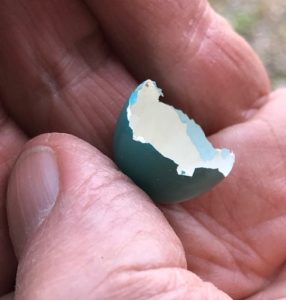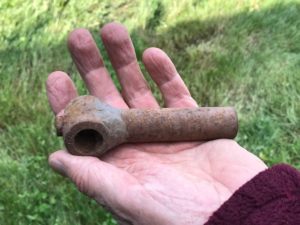Nothing to Do? How About a Nature-Based Scavenger Hunt?
In a traditional scavenger hunt, teams search for a dozen or two unusual items within a time limit between 2-6 hours and then reconvene to see who has found the most and best items on the list. And they relive their adventures for days or weeks thereafter. With children and teens in a park or preserve, the emphasis can shift to a nature-based hunt. And to get more educational value from it, make only half their score based upon finding the item. The other half of their score comes from their ability to observe and interpret what they have found.
Some examples for their search-and-understand list:
- If they find a feather, what species is it from? Was it molted (worn), or was the bird killed (blood, more feathers)?
- If they find a bone, what size animal, which body part, which species? Teeth marks on it, made while fresh or later? More bones from same animal?
- If they find an eggshell, are there cuts the hatchling made around the equator with its egg tooth for tidy half shells, or crumbled shell from predation?

A small robin eggshell chipped open around the equator.
- Abandoned bird nest, what species, from this year or previous year, eggshells nearby, damaged by predators?
- To include live animals, each team can use a cellphone camera – with a team member in the photo to avoid online “cheating.” Don’t settle for a generic identification like “frog” – have them key out chorus frog or cricket frog or whatever it is.
- Small animal parts like crayfish claw, snail shell, clam shell, turtle shell, fish bone, dragonfly, spider web, empty paper wasp nest, etc.
- Plant parts with keyed out species, squirrel-chewed black walnut shell, swamp white oak acorn, caterpillar-chewed wild geranium leaf, sweet flag root (smell it), three-lobed sassafras leaf, shagbark hickory shell, etc.
- Recent artifacts such as a rusty bottle cap, rusty nail, piece of weathered glass, ceramic insulator, used corroded shotgun shell, weathered brass shell casing, old pop top, any very rusty tool found in the dirt, etc.

A strange steel tool found in the dirt.
At the appointed time, the troops reassemble, sit in a circle, pass around treats, and do a show-and-tell about their found treasures. This is the time for questions and answers, checking identifications challenges, stories, scorekeeping, etc. There could be penalties on the list. If someone is wet above the knees, loses their hat or gets lost, it costs their team points. There could be special points for objects so uncommon that they weren’t put on the list, like an arrowhead, a fossil, a skunk cabbage leaf, a rusty belt buckle, etc.
If done well, the actual scores become unimportant. It’s about having a little adventure outdoors, not fully supervised, working as a team, and learning a bit about nature.
This is one of the few games where kids, teens, and adults are all on more-or-less equal footing, so it is quite practical to divide up players in many different ways, for example it could be adults against kids.
Most of the Bur Oak Land Trust properties are great destinations for these games – check out the property listings on the home page at www.buroaklandtrust.org.
Enjoy the summer!!


